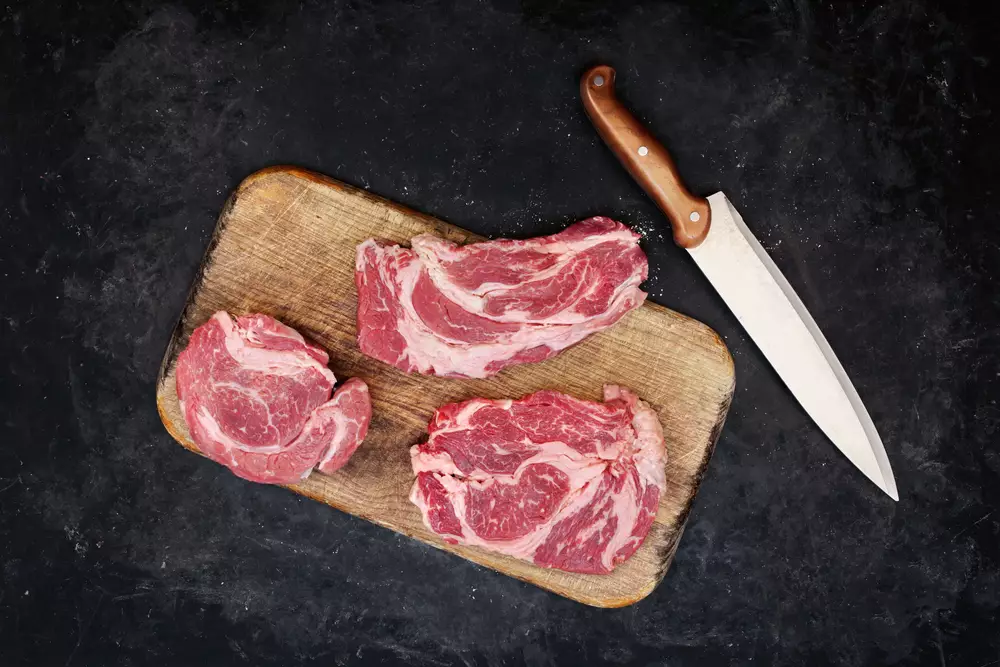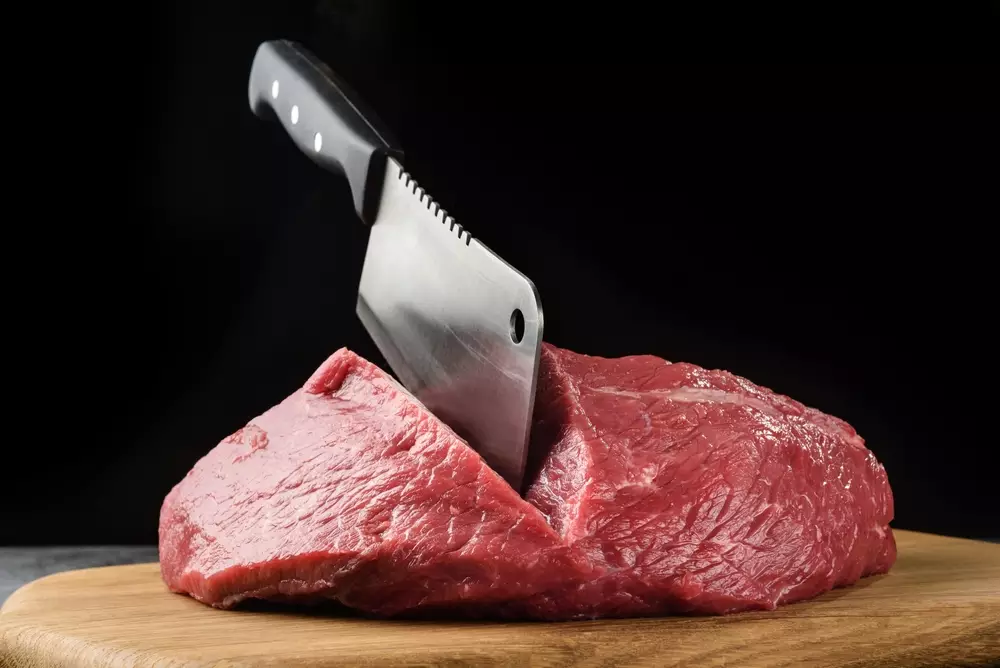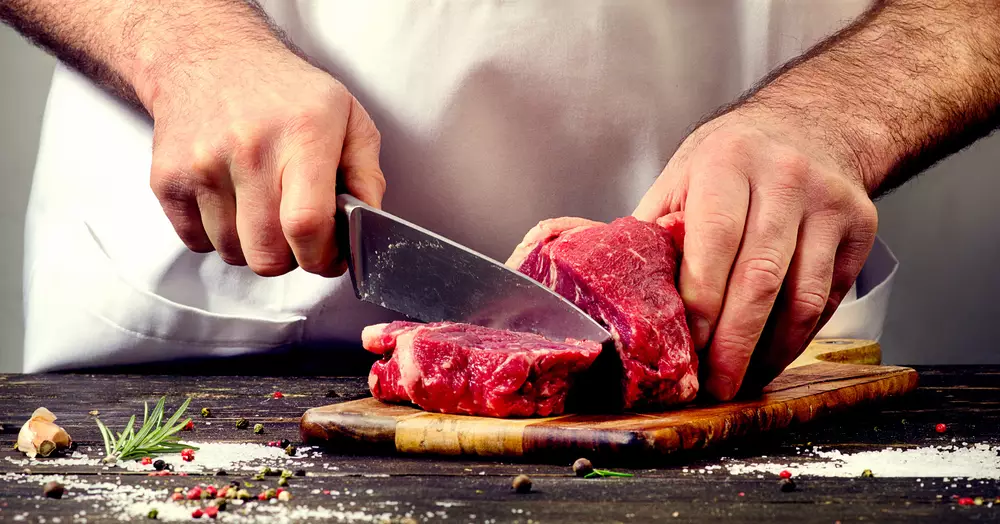A kitchen knife is an essential tool for any home cook or professional chef, and it’s designed to cut through a variety of foods with ease. However, there’s often a debate about can a kitchen knife cut through bone or not. Some people believe that a sharp knife can easily slice through bones, while others argue that it’s not safe to use a kitchen knife for this purpose.
In this article, we’ll explore the question of whether a kitchen knife can cut through bone, and discuss the factors that determine the knife’s ability to do so. We’ll also look at the different types of knives that are commonly used for cutting through bone, and provide some tips on how to safely and effectively use them in the kitchen.
Whether you’re a home cook looking to improve your knife skills or a professional chef looking to expand your repertoire, this article will provide valuable insights into the world of cutting through bones with a kitchen knife.

Factors that Affect a Knife’s Ability to Cut Through Bone
Several factors can affect a knife’s ability to cut through bone. These include:
- Type of Bone: The density and thickness of the bone can affect the knife’s ability to cut through it. For example, a chicken bone is thinner and less dense than a beef bone, so it’s easier to cut through.
- Type of Knife: Not all knives are created equal when it comes to cutting through bone. A thinner, lightweight knife might be ideal for filleting fish, but it’s not suitable for cutting through bones. A heavier and thicker blade is better for this purpose, as it can apply more force.
- Sharpness of Blade: A sharp knife is crucial for cutting through bone safely and effectively. A dull blade requires more force, increasing the risk of slipping and injuring yourself.
- Cutting Technique: The way you hold and position the knife can also affect its ability to cut through bone. It’s important to use the proper cutting technique and angle the knife correctly for the best results.
- Bone Orientation: The orientation of the bone can affect the ease of cutting. It’s usually easier to cut through a bone that’s perpendicular to the blade rather than at an angle.
By considering these factors, you can choose the right knife and technique to cut through bone safely and effectively.
Different Types of Knives for Cutting Through Bone
When it comes to cutting through bone, there are different types of knives that are designed for this specific purpose. Here are some examples:
- Cleaver: A cleaver is a heavy, thick-bladed knife that’s commonly used for chopping through bones. It’s often used in Asian cuisine for cutting through poultry, pork, and beef bones.
- Boning Knife: A boning knife has a thin and flexible blade that’s ideal for removing bones from meat. It’s also useful for cutting through smaller bones, such as those found in fish and poultry.
- Chef’s Knife: A chef’s knife is a versatile kitchen tool that can be used for a variety of cutting tasks, including cutting through bones. However, it’s not the best choice for cutting through larger bones, as it’s not heavy or thick enough.
- Meat Cleaver: A meat cleaver is similar to a traditional cleaver, but has a broader and heavier blade. It’s designed specifically for cutting through larger bones, such as those found in beef and pork.
- Butcher Knife: A butcher knife is a heavy-duty knife that’s designed for cutting through meat, including bones. It has a thick blade and a curved edge that allows for better leverage when cutting through tough cuts of meat.
It’s important to choose the right type of knife for the job to ensure that you can cut through bones safely and effectively. Remember to use the proper cutting technique and to keep your knives sharp for the best results.

How to Maintain Your Knife for Bone Cutting
Maintaining your knife is essential to ensure its longevity and effectiveness when cutting through bones. Here are some tips for maintaining your knife:
- Clean your knife after each use: After using your knife to cut through bones, clean it thoroughly with soap and warm water. Dry it completely to prevent rust and corrosion.
- Sharpen your knife regularly: A sharp knife is essential for cutting through bones safely and effectively. Use a honing steel or sharpening stone to maintain the sharpness of the blade.
- Store your knife properly: Store your knife in a knife block, magnetic strip, or sheath to protect the blade from damage and prevent accidents.
- Avoid using your knife for non-food purposes: Using your knife for non-food purposes, such as opening cans or boxes, can damage the blade and reduce its effectiveness.
- Use a cutting board: Always use a cutting board when cutting through bones to avoid damaging the blade and prolong its lifespan.
- Oil your knife: Applying a thin layer of oil to your knife can help prevent rust and corrosion. Use food-safe oil, such as mineral oil, and wipe it off before using the knife.
Safety Tips for Using a Knife to Cut Through Bone
When using a knife to cut through bone, it’s important to take proper safety precautions to avoid injury. Here are some safety tips to keep in mind:
- Use a sharp knife: A sharp knife requires less force, making it easier and safer to cut through bone. A dull knife, on the other hand, requires more force and increases the risk of slipping and injuring yourself.
- Use a cutting board: Always use a cutting board when cutting through bone to avoid damaging your countertop or injuring yourself.
- Wear gloves: Wearing gloves can provide extra protection for your hands while cutting through bone.
- Use proper cutting technique: Hold the knife securely and use a rocking motion to apply pressure while cutting through the bone. Keep your fingers away from the blade and use a stable cutting surface.
- Use the right knife: Choose the appropriate knife for the task at hand, whether it’s a cleaver, boning knife, or meat cleaver. Using the wrong knife can be dangerous and increase the risk of injury.
- Take breaks: Cutting through bone can be a tiring and repetitive task. Take breaks as needed to avoid becoming fatigued and losing control of the knife.
Conclusion
So, can a kitchen knife cut through bone? Cutting through bone with a kitchen knife can be a daunting task, but with the right tools and techniques, it can be done safely and effectively. Choosing the appropriate knife for the job, maintaining its sharpness, and using the proper technique are all important factors to consider.
A cleaver, boning knife, meat cleaver, chef’s knife, or butcher knife are all suitable options for cutting through bone, depending on the size and thickness of the bone. It’s important to use a stable cutting surface, wear gloves, and take breaks as needed to avoid injury.
When it comes to maintaining your knife, keeping it clean, sharp, and stored properly are key to ensuring its longevity and effectiveness. Regular sharpening, using a cutting board, and avoiding non-food purposes are all important aspects of knife maintenance.
In conclusion, cutting through bone with a kitchen knife requires the right tools, technique, and maintenance. By following the safety tips and using the appropriate knife for the job, you can cut through bones safely and effectively for all your culinary needs.
